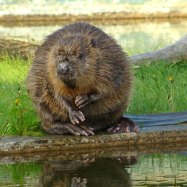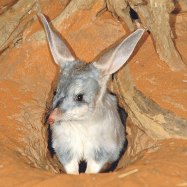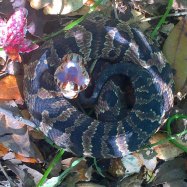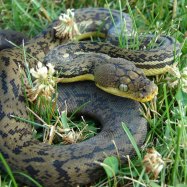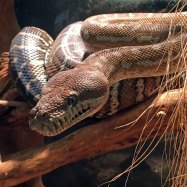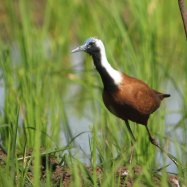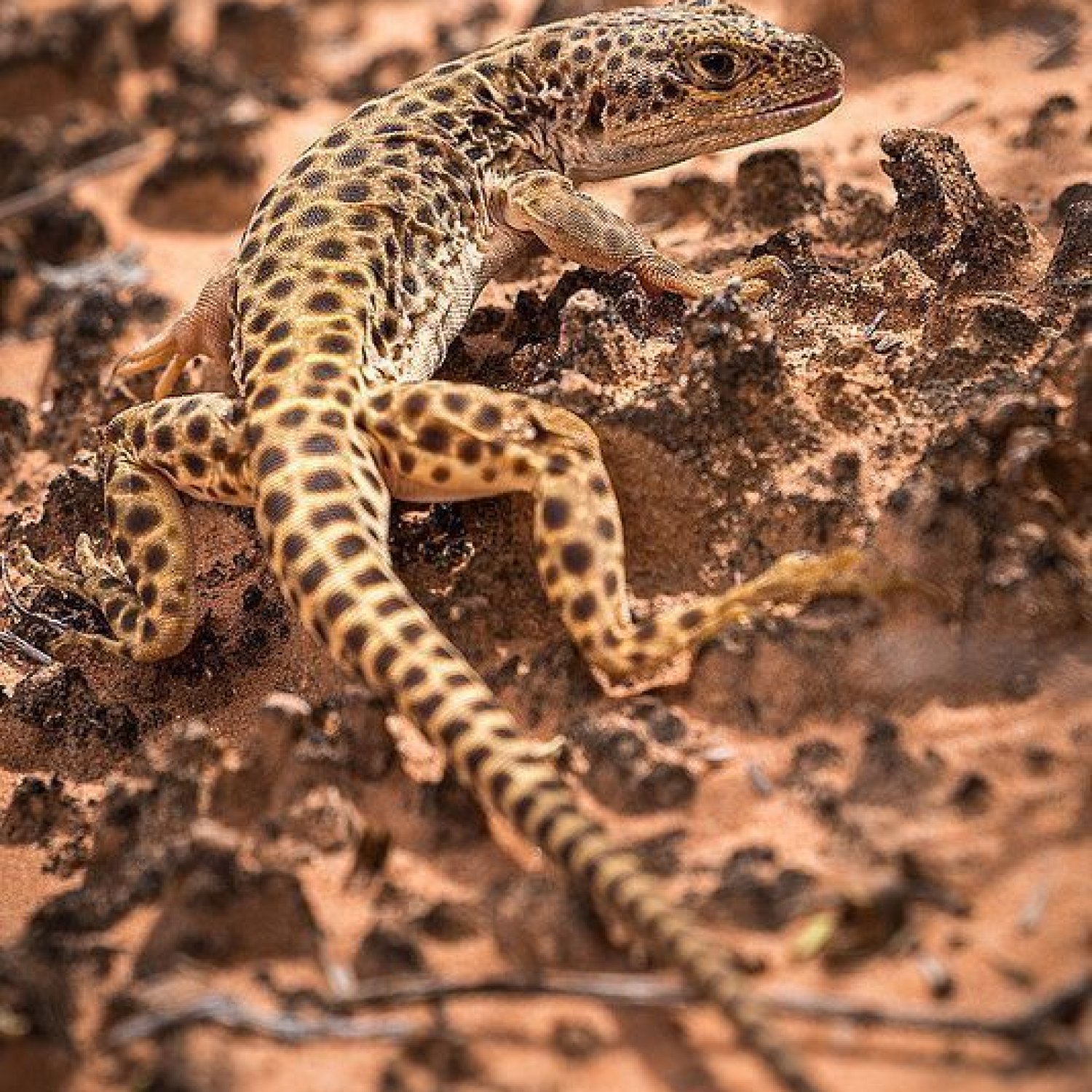
Leopard Lizard
8-14 inches
The Leopard Lizard, found in the Southwestern United States and northwestern Mexico, is known for its slender and elongated body shape. Ranging from 8-14 inches in length, this lizard belongs to the Crotaphytidae family. With its unique markings and swift movements, the Leopard Lizard is a fascinating reptile to observe in its natural habitat. #LeopardLizard #Crotaphytidae #SouthwestUSA #Mexico
Animal Details Summary:
Common Name: Leopard Lizard
Kingdom: Animalia
Habitat: Semi-arid grasslands, deserts, rocky areas
The Elusive and Endearing Leopard Lizard
The southwestern United States and northwestern Mexico are home to a unique and fascinating creature, the leopard lizard. With its striking appearance and elusive nature, the leopard lizard has captured the attention of many wildlife enthusiasts. From its scientific name, Gambelia wislizenii, to its classification within the animal kingdom as a reptile, this lizard is full of interesting and distinctive features that make it stand out among its fellow creatures.The leopard lizard is a species of lizard in the family Crotaphytidae, found primarily in semi-arid grasslands, deserts, and rocky areas Leopard Lizard. Its common name, leopard lizard, is derived from its signature spotted appearance, which varies in color from brown to tan. These spots, along with its slender and elongated body shape, give it a striking resemblance to a leopard, hence its name.
But beyond its physical appearance, the leopard lizard offers so much more in terms of its natural habitat, feeding patterns, geographical distribution, and origins. So buckle up and join us on a journey to explore the unique characteristics of this fascinating creature.
Habitat & Distribution
As mentioned earlier, the leopard lizard is usually found in semi-arid grasslands, deserts, and rocky areas. These areas are characterized by hot and dry climates, which have made them a perfect home for this species. The desert and grassland habitats provide excellent camouflage for the leopard lizard, as its coloration allows it to blend seamlessly with its surroundings.
The leopard lizard is mainly found in the southwestern United States and northwestern Mexico, although some species can also be found in the southern regions of Nevada, Arizona, and California. It prefers areas with open spaces and sparse vegetation, making it easier for the lizard to spot its prey and avoid predators Larder Beetle.
Feeding Patterns
The leopard lizard is a carnivorous reptile, which means its diet consists mainly of other animals. Its primary source of food includes insects, spiders, and other small invertebrates. However, the leopard lizard has also been observed eating small lizards, rodents, and even scorpions. Its strong jaw and sharp teeth make it a formidable predator, capable of taking down prey that is larger in size.
In addition to its strength and agility, the leopard lizard also has exceptional eyesight, which helps it spot its prey from afar. This trait is especially crucial in its desert and grassland habitats, where prey is scarce and blending in with the environment is a survival mechanism.
Appearance and Physical Characteristics
The leopard lizard is a fascinating creature to behold. Its slender and elongated body can reach lengths of 8-14 inches, making it one of the largest species of lizards in its habitat. Its head is triangular, and its body is covered in small scales, giving it a rough and textured appearance. Its coloration varies, but it typically has a brown or tan base with dark spots all over its body.
Despite its fierce appearance, the leopard lizard is a relatively docile creature, and most of its aggression is directed towards prey. When threatened, it can expand the flap of skin on its neck, also known as a dewlap, to appear more prominent. This behavior is common in many species of lizards and is used to intimidate predators or attract mates.
Origins and Classification
The leopard lizard belongs to the kingdom Animalia, which denotes that it is an animal and within the phylum Chordata, meaning it has a backbone. Its class, Reptilia, includes all reptiles, and its order, Squamata, includes lizards and snakes. As stated earlier, the leopard lizard is a member of the family Crotaphytidae, which consists of around twelve species.
Interestingly, the leopard lizard's scientific name, Gambelia wislizenii, has a unique background. It is named after its discoverer, the German-American naturalist Friedrich Adolph Wislizenus, who first described it in the 19th century. Its genus, Gambelia, is derived from the Latin word "gambelia," which signifies a kind of lizard.
Conservation Status
The leopard lizard's habitat is rapidly changing due to human activity, such as urbanization, agriculture, and road construction. This has led to a decline in its population, making it a species of concern for conservationists. In fact, several subspecies of the leopard lizard are listed as endangered or threatened on the International Union for Conservation of Nature's (IUCN) Red List.
A major threat to the leopard lizard's survival is the introduction of non-native species, such as feral cats and dogs, which prey on the lizard and compete for resources. Additionally, wildfires, droughts, and other natural disasters can also have a detrimental effect on the lizard's population.
To ensure the leopard lizard's survival, several organizations have initiated conservation efforts, such as habitat preservation, captive breeding programs, and public education on the importance of protecting this iconic creature and its fragile ecosystem.
Conclusion
The leopard lizard is a unique and elusive creature that has managed to capture the hearts of many wildlife enthusiasts. Its striking appearance, coupled with its fierce hunting abilities, make it a formidable species in its habitat. However, human activities and the introduction of non-native species have posed a significant threat to its existence.
As we continue to explore and learn about the diverse species that make up our planet, it is essential to remember that each creature plays a vital role in maintaining a healthy ecosystem. The leopard lizard is no exception, and much like its namesake, it is an exceptional and resilient creature that deserves our admiration and protection.

Leopard Lizard
Animal Details Leopard Lizard - Scientific Name: Gambelia wislizenii
- Category: Animals L
- Scientific Name: Gambelia wislizenii
- Common Name: Leopard Lizard
- Kingdom: Animalia
- Phylum: Chordata
- Class: Reptilia
- Order: Squamata
- Family: Crotaphytidae
- Habitat: Semi-arid grasslands, deserts, rocky areas
- Feeding Method: Carnivorous
- Geographical Distribution: Southwestern United States and northwestern Mexico
- Country of Origin: United States and Mexico
- Location: Southwestern United States and northwestern Mexico
- Animal Coloration: Varies, typically brown or tan with dark spots
- Body Shape: Slender and elongated
- Length: 8-14 inches
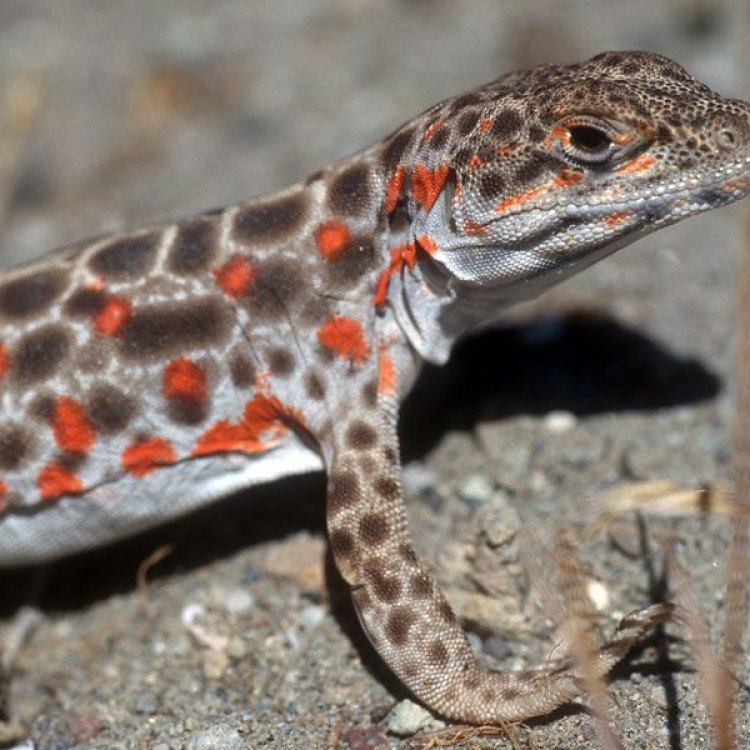
Leopard Lizard
- Adult Size: 8-14 inches
- Average Lifespan: 6-12 years
- Reproduction: Oviparous
- Reproductive Behavior: Mating occurs in spring, females lay eggs in summer
- Sound or Call: Males use visual displays and head-bobbing to communicate
- Migration Pattern: Non-migratory
- Social Groups: Solitary
- Behavior: Active during the day, basks in the sun, fast runner
- Threats: Habitat loss, introduction of non-native predators
- Conservation Status: Least Concern
- Impact on Ecosystem: Preys on insects and other small animals
- Human Use: Popular in the pet trade
- Distinctive Features: Spotted body pattern, long tail
- Interesting Facts: Leopard Lizards can run on their hind legs.
- Predator: Birds of prey, snakes, mammals
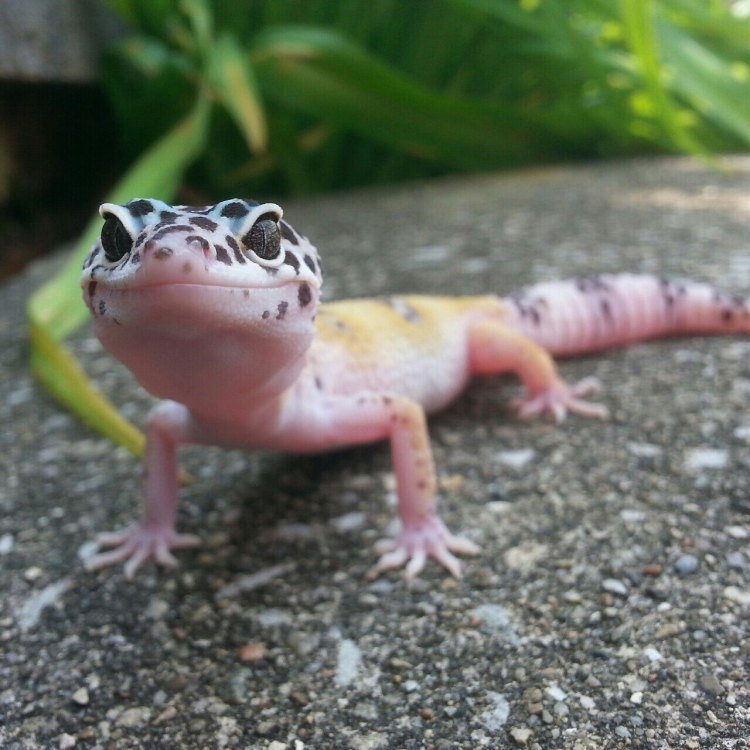
Gambelia wislizenii
The Fascinating World of the Leopard Lizard: A Closer Look at This Unique Reptile
Deep in the arid deserts of the southwestern United States, a magnificent creature roams the rocky terrain with grace and agility. With its striking spotted body pattern and long tail, the leopard lizard (Gambelia wislizenii) stands out as a true marvel of nature. This reptile is highly adaptable and has a range of exceptional traits that make it a truly unique species. In this article, we will delve into the world of the leopard lizard, exploring its physical features, behavior, and ecological significance PeaceOfAnimals.Com.A Closer Look at the Leopard Lizard
The leopard lizard is a medium-sized lizard, typically reaching an adult size of 8-14 inches. Its average lifespan ranges from 6 to 12 years, making it a long-lived species compared to many other reptiles. However, their numbers in the wild are not indicative of their longevity, as they face several threats in their natural habitat.Reproduction and Mating Behavior
One of the most unique aspects of the leopard lizard's reproductive behavior is that it is oviparous, meaning it lays eggs. Mating occurs in the spring, with males using visual displays and head-bobbing to communicate with females. Once the mating is successful, females will lay their eggs in the summer, burying them in the sand for protection.Sounds and Calls
When it comes to communication, these lizards do not rely on vocalization. Instead, males use visual displays and head-bobbing to communicate with one another and attract potential mates. This behavior is usually observed during the mating season and can be quite a fascinating sight to witness Longfin Mako Shark.Migration Patterns and Social Behavior
Unlike some other species of lizards, the leopard lizard is non-migratory and prefers to stay in its natural habitat. They are solitary animals, only coming together to mate and during occasional territorial disputes. However, they are not completely anti-social, and it is not uncommon to find them basking in the sun together.Behavior and Diet
The leopard lizard is an active diurnal species, meaning it is most active during the day. They are skilled runners and can reach impressive speeds when fleeing from threats. To conserve energy and regulate body temperature, they are often seen basking in the sun on rocks and other warm surfaces.Their diet mainly consists of insects and other small animals, making them important predators in their ecosystem. This particular reptile has been observed to have a unique hunting technique – running on their hind legs to chase down prey. This tactic is not only effective but also adds a touch of intrigue to their behavior.
Threats and Conservation Status
One of the most significant threats facing the leopard lizard is habitat loss. As more and more land is developed and urbanized, their natural habitat shrinks, leaving them with fewer resources to survive. Additionally, the introduction of non-native predators, such as cats and dogs, has also affected their population in some areas.Despite these threats, the leopard lizard is currently listed as "Least Concern" on the IUCN Red List. This is due to their relatively wide distribution and stable population. However, conservation efforts are still necessary to ensure their numbers do not decline in the future.
Ecological Significance and Human Use
As mentioned earlier, the leopard lizard plays an essential role in its ecosystem as a predator of insects and other small animals. This helps to maintain a healthy balance in the desert ecosystem and contributes to the overall diversity of the region.Unfortunately, these lizards also have a role in human use – they are highly sought after in the pet trade. Due to their unique appearance and relatively docile nature, many people are drawn to them as pets. While it is not illegal to own a leopard lizard as a pet, it is crucial to obtain them from ethical and responsible sources to ensure their well-being and support conservation efforts.
Distinctive Features and Interesting Facts
The leopard lizard's most distinctive features are its spotted body pattern and long tail. This pattern is not only beautiful but also acts as camouflage, helping them blend into their surroundings and avoid predators. The long tail also serves a purpose – it acts as a counterbalance, giving them more stability and agility when running and climbing.In addition to their distinctive features, there is no shortage of interesting facts about leopard lizards. For one, they are known for their impressive ability to run on their hind legs, much like a miniature version of the popular movie character, Godzilla. They can also inflate their bodies, making them appear larger to scare off potential predators.
Predators and Human Interaction
Despite their impressive abilities and adaptations, the leopard lizard is not immune to threats in the wild. Their predators include birds of prey, snakes, and some mammals such as coyotes and foxes. These predators pose a constant threat to the lizard's population, making it even more crucial to conserve their natural habitat and protect them from human activities.While human interaction with leopard lizards may seem minimal, it is still vital to keep their numbers stable and ensure they are not being negatively affected. This can be achieved through responsible pet ownership, avoiding unsustainable development in their habitats, and supporting conservation efforts.
The Importance of Understanding and Protecting the Leopard Lizard
In conclusion, the leopard lizard is a unique and fascinating species that plays a crucial role in its ecosystem. With its distinctive features, intriguing behavior, and ecological significance, it is essential for us to understand and protect these reptiles to ensure their survival for future generations. By supporting conservation efforts and being responsible in our interaction with them, we can help preserve this wonderful creature and continue to learn more about its impressive adaptations and behaviors. Let us appreciate and protect the leopard lizard for all its remarkable qualities and contributions to our environment.

The Elusive and Endearing Leopard Lizard
Disclaimer: The content provided is for informational purposes only. We cannot guarantee the accuracy of the information on this page 100%. All information provided here may change without prior notice.


